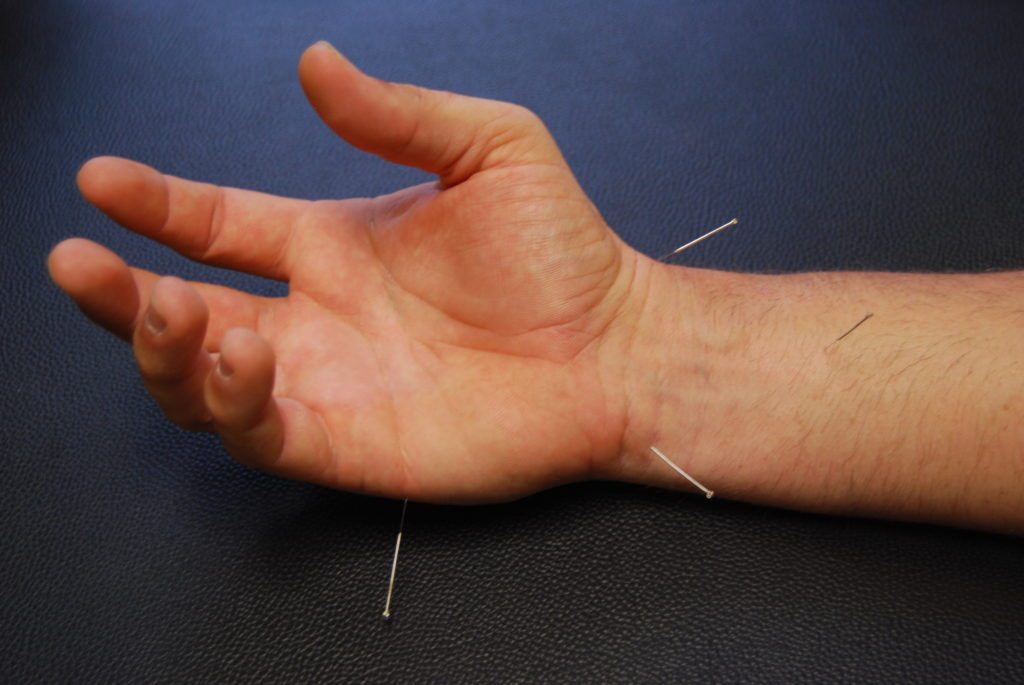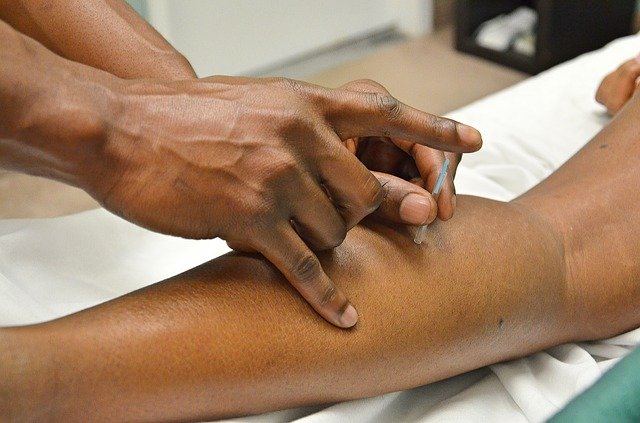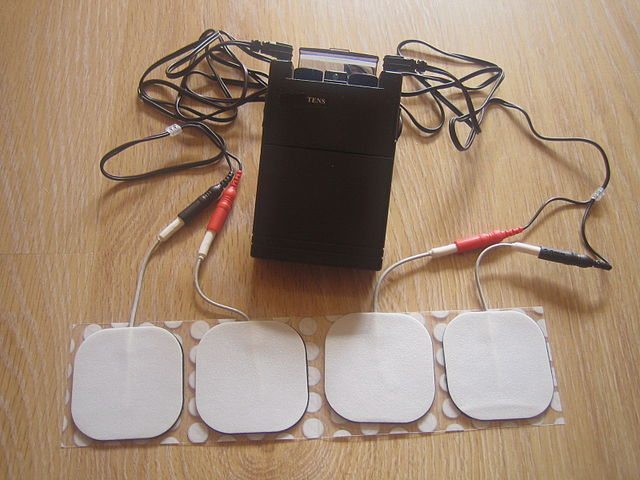Dry needling is often used in the treatment of muscle trigger points. However, it has also been shown to help with conditions that are indirectly caused by muscle tension. One example of these conditions is Carpal Tunnel Syndrome. Carpal tunnel syndrome is a condition involving the median nerve of the arm, frequently causing numbness, weakness, and pain throughout the wrist and hand.
Many individuals believe that Carpal Tunnel Syndrome is only a result of the this nerve being compressed at the wrist. This, however, is not always the only area affected. This nerve controls sensation to the skin of the palmar side of the thumb, index, middle, and half of the ring finger. It can easily be compressed as it passes through the muscles of the forearm, and sometimes even as far up the arm as the shoulder and neck (though if the impingement is that far up the farm, it is no longer called carpal tunnel syndrome, even though it could appear the same in clinical presentation. For this reason, it is essential that a person experiencing numbness, tingling, weakness, and pain the wrist and hand go through a thorough evaluation in order to determine the cause of dysfunction.
The most frequently discussed cause of carpal tunnel syndrome is the mechanical compression of the median nerve through a small “tunnel” or opening in the wrist. Therefore, traditional treatment involves the manipulation of the tunnel area. The can be accomplished surgically in some situations, and through conservative treatment options such as chiropractic care, muscle rehabilitation activities and acupuncture or dry needling techniques.
When supporting the carpal tunnel through strengthening the surrounding muscles, the treatment involves supporting the flexor muscles that frequently compress the nerves of the forearm, and create instability to the tunnel. These muscles include:
- Pronator Teres
- Flexor Digitorum Superficiallis
- Flexor Digitorum Profundus
- Flexor Carpi Ulnaris
- Flexor Pollicis Longus
Excessive loading, or stress of these flexor muscles can lead to subsequent muscle tension throughout the hand and fingers, aggravating the nerves that lead to numbness, tingling, weakness, and pain.

Dry needling the trigger points associated with these muscles may be helpful in the treatment of Carpal Tunnel Syndrome. Different than treating specific trigger points for referral patterns, we aim to relieve pressure on taut bands that may be contributing to the compression of the median nerve located above the wrist. This may also help with conditions that derive from the ulnar nerve located around the flexor carpi ulnaris and the conditions associated with its nerve distribution.
The good news, is individuals with Carpal Tunnel Syndrome have many non-invasive, drug free options that are effect in reducing pain, increasing strength, and addressing the underlying cause of dysfunction. Before rushing to the surgery department, treatments such as chiropractic, muscle rehabilitation exercises, and acupuncture or dry needling can be used as effective therapies.



my father complete for CAGB heart surgery for past one year. after surgery my father affect for carpal tunnel syndrome so then I consult the neurologist doctor. the doctor refer to surgery. but i am not interest for again surgery. which treatment best for this condition for example(Ayurveda,acupressure,etc…)